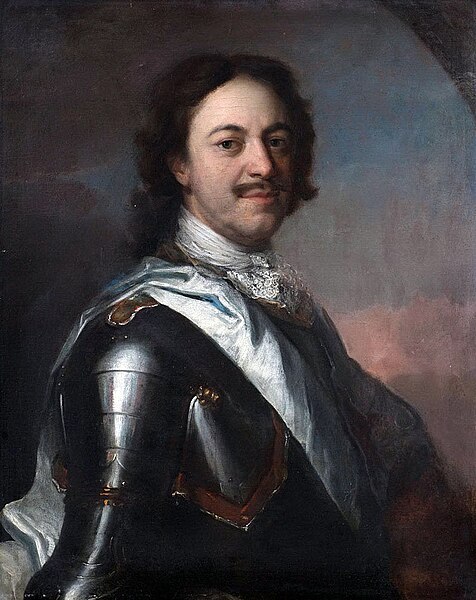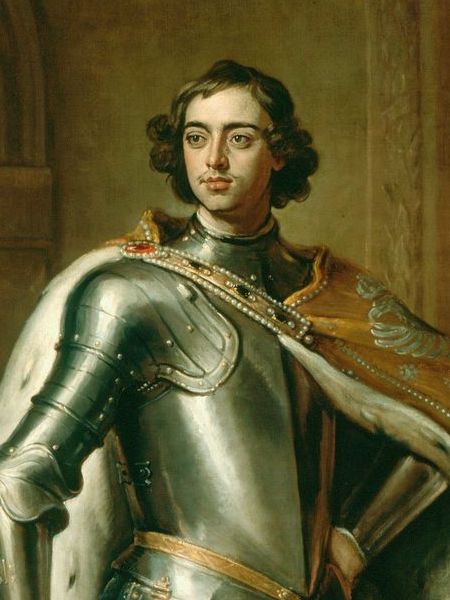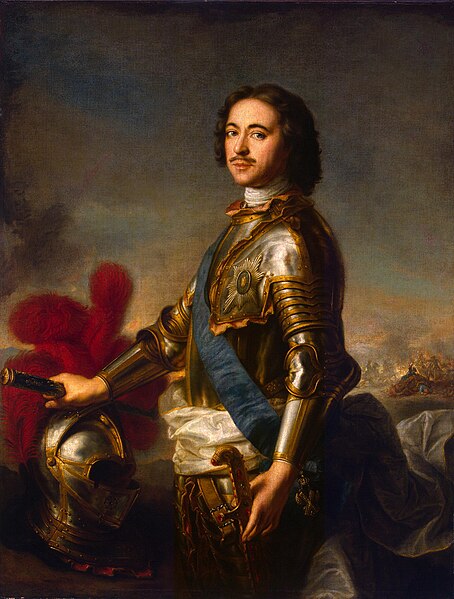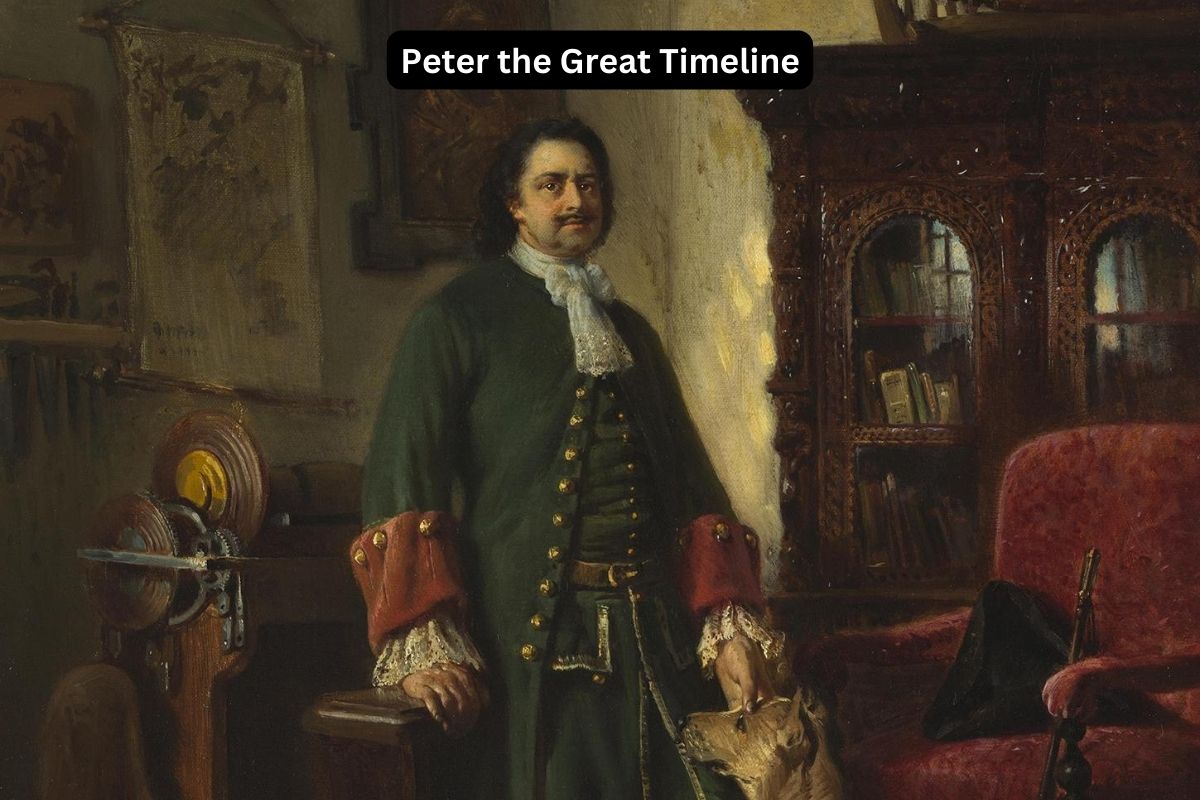Peter the Great, one of Russia’s most formidable and visionary leaders, left an indelible mark on the landscape of European history.
Born in 1672, Peter’s reign ushered in a period of unprecedented transformation and modernization in Russia. From his ambitious military campaigns to his sweeping social and cultural reforms, Peter’s legacy continues to resonate centuries after his passing.
This article provides an overview of Peter the Great’s life, highlighting key events, accomplishments, and the enduring impact of his rule on the trajectory of Russian history.
| Year | Event |
|---|---|
| 1672 | Peter the Great is born in Moscow to Tsar Alexis of Russia and his second wife, Natalya Naryshkina. |
| 1682 (May 15) | Peter’s father, Tsar Alexis, dies, and Peter’s half-brother, Ivan V, becomes co-tsar with their half-brother Peter (later known as Peter the Great). |
| 1689 | Peter becomes the sole ruler of Russia at the age of 17 after the death of Ivan V. |
| 1697-1698 | Peter embarks on the “Grand Embassy,” a diplomatic mission to Western Europe to learn about shipbuilding, technology, and modern governance. |
| 1698 (September 18) | Streltsy Uprising in Moscow, an event that deeply influenced Peter’s view of the need for modernization and reform in Russia. |
| 1700-1721 | The Great Northern War, fought between Russia and Sweden, during which Peter the Great leads Russian forces to victory and secures access to the Baltic Sea. |
| 1703 (May 27) | Peter founds the city of Saint Petersburg, which becomes the new capital of Russia in 1712. |
| 1709 (July 8) | Battle of Poltava, a decisive victory for Peter’s forces against the Swedish army, solidifying Russian dominance in Northern Europe. |
| 1717-1718 | Peter the Great travels incognito to Western Europe, working as a shipyard laborer and studying Western technology and governance. |
| 1721 (May 15) | The Treaty of Nystad is signed, ending the Great Northern War and establishing Russian control over the Baltic region. |
| 1724 (February 8) | Peter the Great dies in Saint Petersburg at the age of 52. His wife, Catherine I, succeeds him as Empress of Russia. |
Timeline of Peter the Great
1672: Peter the Great is born in Moscow
Peter the Great is born on June 9th in Moscow, Russia, to Tsar Alexis of Russia and his second wife, Natalya Naryshkina. He was christened Pyotr Alexeyevich.
Peter’s early years were marked by turmoil within the Russian court, as his father’s reign saw internal strife and conflict among various factions vying for power.

1682 (May 15): Peter’s father, Tsar Alexis, dies
Following the death of Tsar Alexis, Peter’s father, a power struggle ensues among the ruling elite.
At this time, Peter’s half-brother, Ivan V, who suffered from physical and mental disabilities, ascends to the throne alongside his half-brother, Peter, who was only ten years old at the time.
In reality, their sister Sophia, acting as regent, wielded significant influence over the government.
1689: Peter becomes the sole ruler of Russia at the age of 17 after the death of Ivan V
After years of political maneuvering and increasing tensions within the royal family, Peter seizes full control of the throne at the age of 17. He ousts his half-sister Sophia from power, effectively becoming the sole ruler of Russia.
Also Read: Peter the Great Accomplishments
This marks the beginning of Peter’s ambitious reign, during which he would embark on extensive reforms and modernization efforts aimed at transforming Russia into a European power.
1697-1698: Peter embarks on the “Grand Embassy,” a diplomatic mission to Western Europe
In 1697, Peter the Great embarked on a transformative journey known as the “Grand Embassy.” This diplomatic mission took him and a large entourage from Russia to Western Europe.
The primary objective of the Grand Embassy was to learn about Western technologies, governance systems, and military strategies. Peter’s exposure to the advancements of Western European countries during this trip would greatly influence his vision for modernizing Russia.
1698 (September 18): Streltsy Uprising in Moscow
Upon returning from the Grand Embassy, Peter faced a significant challenge to his authority in the form of the Streltsy Uprising in Moscow. The Streltsy, a powerful and traditionally loyal military force, rebelled against Peter’s reforms and attempted to overthrow his rule.
Also Read: Catherine the Great Facts
However, Peter swiftly crushed the rebellion, demonstrating his determination to enforce change and consolidate his power. The suppression of the Streltsy Uprising further reinforced Peter’s commitment to modernization and the strengthening of central authority in Russia.

1700-1721: The Great Northern War, fought between Russia and Sweden
The Great Northern War was a pivotal conflict that shaped Peter the Great’s reign and Russia’s place in European geopolitics. Fought primarily between Russia and Sweden, the war began in 1700 when Peter sought to challenge Swedish dominance in the Baltic region.
The conflict lasted for over two decades and witnessed numerous battles and campaigns across Northern Europe. Peter personally led Russian forces into battle, showcasing his military prowess and strategic vision.
The war culminated in Russia’s decisive victory at the Battle of Poltava in 1709, which marked a turning point in the conflict and solidified Russia’s emergence as a major European power.
The Treaty of Nystad, signed in 1721, formally ended the Great Northern War and secured significant territorial gains for Russia, including access to the Baltic Sea and control over strategic territories in the region.
1703 (May 27): Peter founds the city of Saint Petersburg, which becomes the new capital of Russia in 1712
Peter the Great founds the city of Saint Petersburg. Located on the Gulf of Finland, Saint Petersburg was strategically positioned to facilitate trade and serve as a gateway to Western Europe.
The construction of the city was a monumental undertaking, with Peter overseeing its design and development personally. Saint Petersburg would later become the new capital of Russia in 1712, reflecting Peter’s desire to modernize and Europeanize his empire.
1709 (July 8): Battle of Poltava, a decisive victory for Peter’s forces against the Swedish army, solidifying Russian dominance in Northern Europe
The Battle of Poltava is a landmark event in Peter the Great’s military career and in Russian history. Fought between the Russian army and the forces of Sweden, led by King Charles XII, the battle resulted in a decisive victory for Peter’s forces.
The Russian victory at Poltava shattered Swedish dominance in Northern Europe and established Russia as a formidable military power on the continent. The battle’s outcome significantly contributed to Russia’s emergence as a major player in European affairs.

1717-1718: Peter the Great travels incognito to Western Europe, working as a shipyard laborer and studying Western technology and governance
In a bold and unprecedented move, Peter the Great embarked on a secret journey to Western Europe in 1717.
Disguised as a common laborer named Peter Mikhailov, he traveled to the Netherlands, England, and other European countries to study their industries, technology, and governmental structures firsthand.
By immersing himself in the societies and economies of Western Europe, Peter sought to glean valuable insights that could inform his ongoing efforts to modernize Russia.
1721 (May 15): The Treaty of Nystad is signed, ending the Great Northern War and establishing Russian control over the Baltic region
The Treaty of Nystad marks the official end of the Great Northern War. Signed between Russia and Sweden, the treaty solidified Russia’s territorial gains in the Baltic region and formally recognized Russia’s status as a dominant power in Northern Europe.
As a result of the treaty, Russia gained control over significant territories, including Estonia, Livonia, and parts of Finland. The Treaty of Nystad represented a triumph for Peter the Great and his ambitious agenda to expand and strengthen the Russian Empire.
1724 (February 8): Peter the Great dies in Saint Petersburg at the age of 52. His wife, Catherine I, succeeds him as Empress of Russia
Peter the Great passes away in Saint Petersburg at the age of 52. His death marked the end of an era in Russian history and left a profound legacy of reform and modernization.
Despite facing significant opposition and challenges throughout his reign, Peter’s visionary leadership transformed Russia into a major European power and laid the foundation for its future growth and development.
Peter was succeeded by his wife, Catherine I, who briefly ruled as Empress of Russia before passing the throne to their grandson, Peter II.
